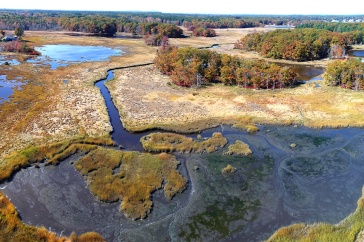
One of the leading indicators of climate change — phenology, or nature’s calendar — can provide some insight into past climatic trends as well. New research from the University of New Hampshire indicates that when air temperatures stabilized a decade ago, so did phenology.
In the early part of this century, there was a temporary slowdown in the rise of the Earth’s air temperatures. Scientists found that during that period, phenology remained relatively static from year to year, with no appreciable increase in the length of the growing seasons.
“This finding was a big surprise to us because of our changing climate,” says Jingfeng Xiao, a researcher at the UNH Earth Systems Research Center who co-authored the study. “We usually experience a longer growing season, with spring coming earlier and fall coming later, but this wasn’t the situation from 1998 to 2012 in the northern hemisphere.”
“We usually experience a longer growing season, with spring coming earlier and fall coming later, but this wasn’t the situation from 1998 to 2012 in the northern hemisphere.”
Xiao’s research, published in the journal Nature Communications, focuses on that 15-year period when the Earth’s temperatures rose more slowly than in the years before and after. Xiao and his co-author Xufeng Wang, a visiting scholar at UNH, examined the carbon dioxide exchange between plants and the atmosphere from 56 sites located in forests, croplands, savannas, shrublands and grasslands in the northern hemisphere. They compared those findings with satellite imagery that indicated the dates of leaf-out (when leaves emerge in the spring) and senescence (when leaves fall and plants die off or enter dormancy in autumn) to estimate the length and timing of the growing season, which stayed about the same for that time period.
Although this may seem like it’s in direct contrast to what other researchers and citizen scientists have found in recent years, Xiao says that’s not necessarily the case; the discrepancies among phenological studies are likely due to scientists examining different types and sources of data, which leads to a mismatch when they are compared with one another. And, Xiao notes, no other previous study has examined the changes in phenology in the northern hemisphere for that particular time period when warming slowed down.
Regardless, looking at trends requires more than just a few years’ worth of phenological data.
“It’s crucial to look at very long datasets — at least a decade or longer — to properly assess big-picture phenological trends,” Xiao says.
Phenology plays a major role in helping to regulate plant photosynthesis, transpiration, and water evaporation. With phenology stabilizes, it’s easier for us to estimate when fall foliage will peak or when to start a garden, and insects are in sync with the blooming plants they help to pollinate.
Conversely, phenological variations make it more difficult for scientists to estimate the Earth's carbon, water, and energy exchange
between the atmosphere and the Earth’s surface, which can then affect climate change projections. A longer growing season could increase the amount of carbon dioxide that plants absorb from the atmosphere and enhance crop yield and wood production, but that could potentially reduce soil water content and stream flow, Xiao explains.
And phenological trends don’t just affect plants — just ask anyone suffering from seasonal allergies what an earlier start to the growing season means to them.
Looking towards the future, what happens if the Earth experiences a more stable climate or another slowdown in the rise of air temperatures? It’ll likely lead to another period of stable phenology and similar growing season length, Xiao says. And if the climate does not stabilize? Expect a lot more changes in the timing of the natural world.
Funding for this research was provided in part by the National Aeronautics and Space Administration and the National Science Foundation.
The Institute for the Study of Earth, Oceans, and Space (EOS) is UNH’s largest research enterprise, comprising six centers with a focus on interdisciplinary, high-impact research on Earth and climate systems, space science, the marine environment, seafloor mapping, and environmental acoustics. With more than $43 million in external funding secured annually, EOS fosters an intellectual and scientific environment that advances visionary scholarship and leadership in world-class research and graduate education.
-
Written By:
Rebecca Irelan | Institute for the Study of Earth, Oceans, and Space | rebecca.irelan@unh.edu | 603-862-0990



















































